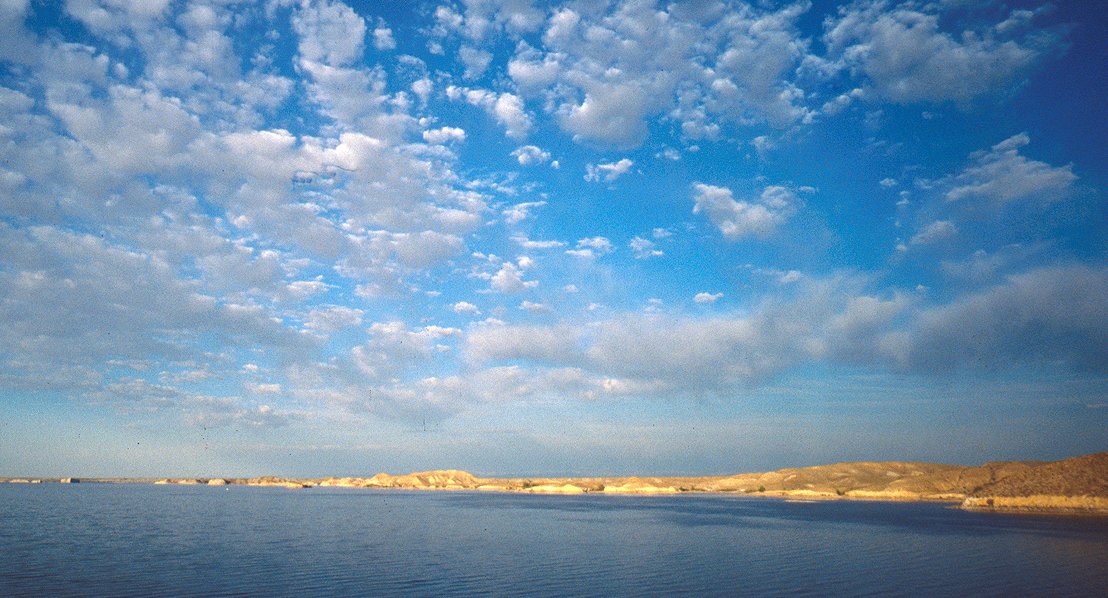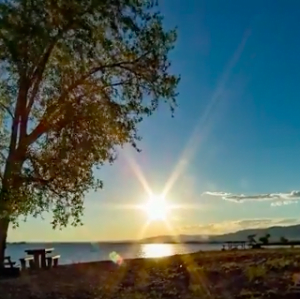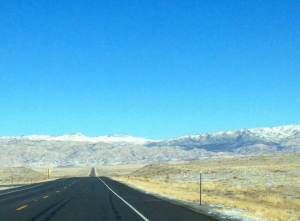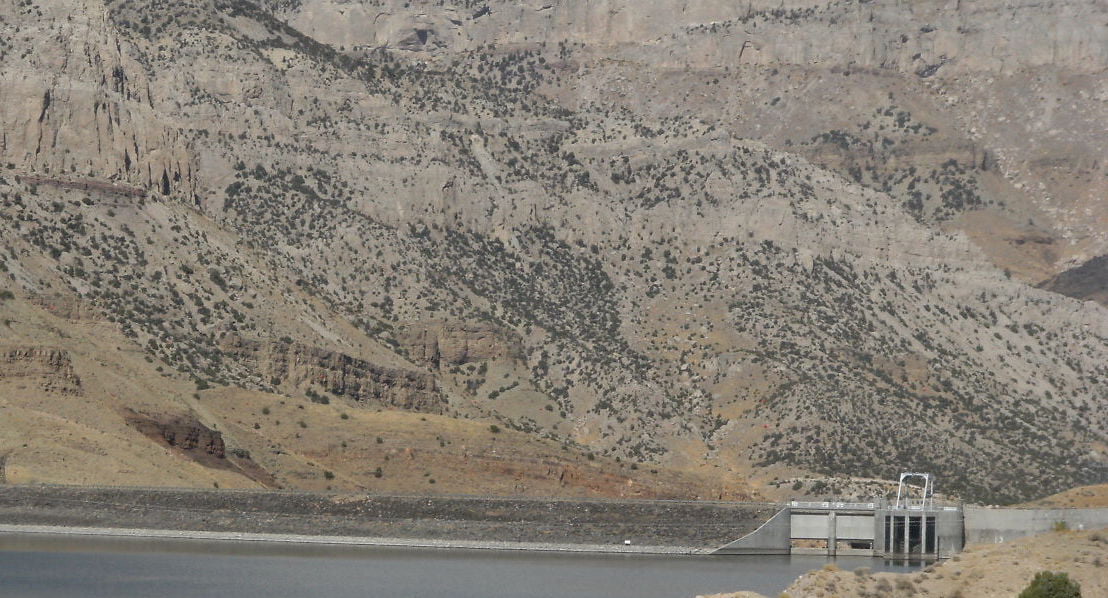May 19, 2017
This article originally ran in the May issue of the Wind River Country Magazine.
For those with a penchant for fishing and prehistoric geology, the Boysen Reservoir Trail can’t be missed. Explore the wonders of the area:
It all starts in Shoshoni
Shoshoni, on the northern edge of Wind River Country, was established in 1904. The town has gone through several boom and bust cycles from oil and gas exploration and today is our gateway town to Boysen Reservoir and the Wind River Canyon Scenic Byway.
Shoshoni lies in a high basin rimmed by the rugged Bridger and Owl Creek mountains to the north and the Wind River Range on the far western horizon. The surrounding country speaks of difficulty: Badwater Creek, Poison Creek and Tough Creek. At the same time, it has a stark beauty that becons exploration.
Bring your fishing rod and license for the Boysen Reservoir. At 19,500 acres, the reservoir is one of the largest in the state. It provides excellent fishing for walleye and rainbow trout, particularly in the spring. Other species of sport fish include cutthroat trout, brown trout, sauger, perch, crappie, ling (and odd looking member of the cod family), largemouth bass and lake trout.
 Fish & Camp Boysen Reservoir State Park
Fish & Camp Boysen Reservoir State Park
Boysen Reservoir was built in 1951 to provide irrigation water to 100,000 acres of farmland. The lake and surrounding shoreline were designated a state park five years later. The Wind River flows norht here before it meets the dam and Wind River Canyon.
You’ll find a a marina with boat rentals and fishing licenses or you can pick up a fishing license from any member of businesses in Shoshoni. For information, contact Boysen State Park (307-875-2796), located 13 miles north of Shoshoni on Highway 20.
 To get to the western shore of the reservoir, drive toward Riverton on Hwy. 26/789 five miles west from Shoshoni to West Shoreline Drive, where signs will guide you to campgrounds and boat ramps. If you don’t mind driving on gravel roads, take West Shoreline Drive Loop 1 to several campgrounds, then back out to the main paved road a mile west of South Muddy Campground. You can also explore Cottonwood Bay, a popular arm of the reservoir where boaters enjoy water skiing and fishing and you can spread out a blanket on the sand beach to soak in some sun.
To get to the western shore of the reservoir, drive toward Riverton on Hwy. 26/789 five miles west from Shoshoni to West Shoreline Drive, where signs will guide you to campgrounds and boat ramps. If you don’t mind driving on gravel roads, take West Shoreline Drive Loop 1 to several campgrounds, then back out to the main paved road a mile west of South Muddy Campground. You can also explore Cottonwood Bay, a popular arm of the reservoir where boaters enjoy water skiing and fishing and you can spread out a blanket on the sand beach to soak in some sun.
Along your way, keep an eye peeled for antelope and raptors that live in this rugged high desert country. To the north lie the Owl Creek Mountains, part of the sprawling Wind River Indian Reservation. You’ll want to spend some time fishing from the rocky shoreline or taking a walk through the desert. You can also fish Lake Cameahwait (also known as Bass Lake) located just off West Shoreline Drive. West Shoreline Drive Loop 2 will take you back out to the paved road and you can drive back south to catch Hwy. 26 for a return to Shoshoni. Then, from Shoshoni, turn left at the only major intersection, the junction of Hwys. 20 and 26, driving north on Hwy. 20.
 You may be faced with a tough decision—water or rocks? Or both? On your water (left) side, as you drive the 14 miles to Boysen Dam, you will pass three pull-offs that will take you to great water recreation areas. First stop is Tough Creek campground, built on a spit extended into the lake, provides lots of water access for all. The next campground headed north is Tamarask and then Bannon; between the two lies the marina offering food, supplies, fishing licenses, etc. All of these offer camping, picnic tables, water access and boat ramps, restrooms, children’s playgrounds and more.
You may be faced with a tough decision—water or rocks? Or both? On your water (left) side, as you drive the 14 miles to Boysen Dam, you will pass three pull-offs that will take you to great water recreation areas. First stop is Tough Creek campground, built on a spit extended into the lake, provides lots of water access for all. The next campground headed north is Tamarask and then Bannon; between the two lies the marina offering food, supplies, fishing licenses, etc. All of these offer camping, picnic tables, water access and boat ramps, restrooms, children’s playgrounds and more.
To enjoy the second option—rocks—you’ll head east (right) on any one of a few roads: Booneville or Tough Creek, turning north on Quin Sabe or Bird’s Eye Road. Bird’s Eye heads east then curves north, or you can take it up to Copper Mountain Road and on up into the mountain for some great rock formations and beautiful scenery. In various places throughout this area, keep your eyes peeled to the ground to find many kinds of fossils and minerals from banded iron, tiger eye, quartz an mica sheets to pegmatites (they can house other gemstones within them) and more. A great guide for the area is offered back in Riverton at Rock Solid on Main Street. Grab the book “Wyoming Rockhounding.” It’s filled with maps and directions and advice on the “big finds.”
Scenic Delights of Wind River Canyon
Back on Hwy. 20, head north to the dam and the next leg of your journey. Explore the Wind River Canyon Scenic Byway. This is where the Wind River begins carving down through rock to form the canyon. You’ll find two cottonwood shaded campgrounds on the north side of the dam: the Upper and Lower Wind River Campgrounds with great facilities as well as some of the best brown trout fishing in the country.
Enjoy the canyon geology as the river slices its way through formations from the Triassic period (208–245 million years old) to the Precambrian period (570–2900 million years old). There are only five places in the world where you can travel through 500 million years of geologic time, two in the United States. You’ll find one of those opportunities in the Grand Canyon and the other here in Wind River Canyon. Road signs mark the geologic passage.
If you drive the length of the canyon, it’s an additional 14 miles to Wedding of the Waters. Here is where the name of the Wind River changes to the Big Horn River. This conundrum was created by explorers mapping the U.S. Those mapping areas of Wyoming started at its source and named the river for the mountains from which it came. Those mapping areas of Montana and the Yellowstone River named it the Big Horn, not knowing until later that the two rivers were the same. Thus, the names are wed at the Wedding of the Waters.
You can turn around here and head back to Shoshoni. Or you can continue on to the town of Thermopolis which is a whole new adventure. Here you can schedule a high intensity whitewater raft trip through the canyon, visit a world-famous dinosaur museum and dig, or relax in the hot mineral-infused waters of the state park.
Whenever you head back into Wind River Country, don’t forget to stop to fish in the river at the base of the dam. The river here provides some of the best fishing in the area, and you may hook into trophy-sized walleye, rainbow or brown trout.
 Your Wyoming fishing license is valid downstream; however, a portion of the river is within Wind River Indian Reservation land, so an additional Reservation fishing permit is required in those areas.
Your Wyoming fishing license is valid downstream; however, a portion of the river is within Wind River Indian Reservation land, so an additional Reservation fishing permit is required in those areas.